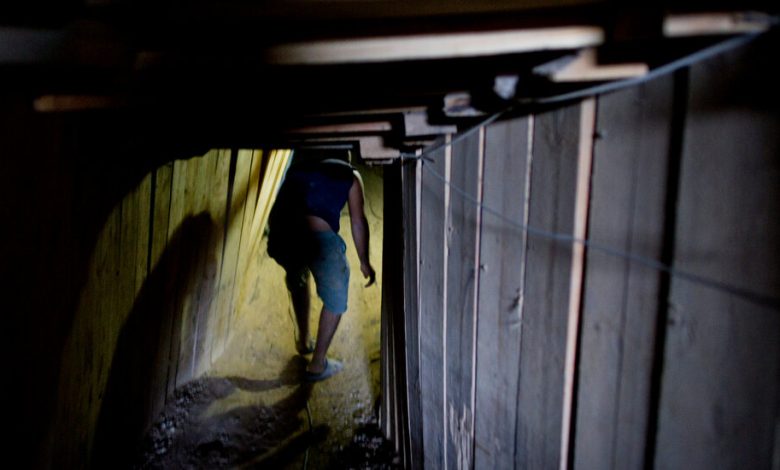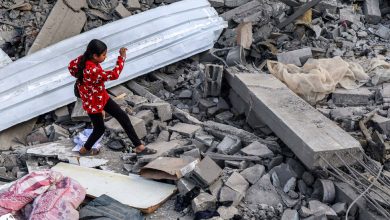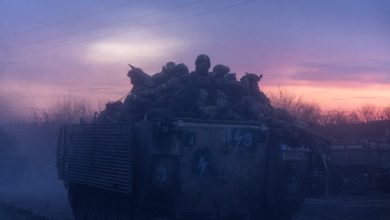As Gazans Scrounge for Food and Water, Hamas Sits on a Rich Trove of Supplies

As supplies of virtually every basic human necessity dwindle in Gaza, one group in the besieged enclave remains well-stocked: Hamas.
Arab and Western officials say there is substance to Israeli claims of Hamas stockpiling supplies, including desperately needed food and fuel. Hamas, they say, has spent years building dozens of kilometers of tunnels under the strip where it has amassed stores of virtually everything needed for a drawn-out fight. It is a reality that Israel may soon find itself grappling with if it makes good on its threat to invade Gaza.
Hamas has hundreds of thousands of gallons of fuel for vehicles and rockets; caches of ammunition, explosives and materials to make more; and stockpiles of food, water and medicine, the officials said. A senior Lebanese official said Hamas, which is estimated to number between 35,000 and 40,000, had enough stocked away to keep fighting for three to four months without resupply.
One of the four Israeli hostages released by Hamas even described the group providing captives with medicine, shampoo and feminine hygiene products. All are now said to be extraordinarily scarce in Gaza more than two weeks after Israel, aided by Egypt, imposed what it called a “complete” blockade following the attack by the terrorist group on Oct. 7.
The Arab and Western officials who described Hamas’s supply situation all spoke on the condition of anonymity because they were disclosing information gleaned from human sources, communications intercepts and other streams of intelligence. The stockpiles are typically kept underground, they said, and cautioned that precise details on Hamas’s supplies were difficult to come by.
While the blockade has left Gaza’s roughly 2 million people scraping by with what little food and water they scrounge up, it does not yet appear to have begun to degrade Hamas’s ability to fight. The group has launched hundreds of rockets at Israel since the blockade began and have fended off preliminary Israeli incursions into the enclave.
The supply situation speaks to the relative sophistication of Hamas as a fighting force — an axiom among military professionals is that while amateurs talk about tactics, professionals talk about logistics. Yet with Gazans facing a humanitarian catastrophe, Hamas’s stockpiles raise questions about what responsibility, if any, it has to the civilian population.
History abounds of well-supplied armies fighting on the front lines while the home front went hungry. Germans, for instance, endured what became known as the “Turnip Winter” at the height of World War I, even as the Kaiser’s armies were well provisioned. They eventually lost and the German Empire fell.
Hamas has said little of its supply situation — combatants rarely do — but the government it runs in Gaza says it has an emergency fuel stockpile that is quickly being depleted. “Hospitals, the ambulances and fire fighters’ machinery and civil defense trucks have been using the government emergency fuel store,” said Salama Marouf, who runs the government’s media office in Gaza.
But those fuel stockpiles are separate from and far smaller than the 211,000 to 264,000 gallons of gasoline and diesel that the Israeli military says Hamas has on hand.
Fuel has taken on growing importance in recent days. Israel has so far refused to allow any fuel to be delivered to Gaza, even as other aid begins to trickle in, leaving much of the enclave without electricity to power hospitals, desalinate or pump water, fire bakers’ ovens and run internet and cellphone services. The United Nations, which handles the bulk of humanitarian relief work in Gaza, said on Thursday that it “has almost exhausted its fuel reserves and begun to significantly reduce its operations.”
Asked about the situation, Lt. Col. Jonathan Conricus, an Israeli military spokesman, told reporters that if Gazans or the United Nations need fuel, they should get it from Hamas.
“Hamas has fuel but has different priorities — to provide ventilation and air for its tunnel system, for firing rockets, command and control,” he said on Thursday.
Neither the Arab nor the Western officials offered estimates anywhere as detailed as what the Israelis claim. And with only a trickle of aid beginning to reach Gaza, Hamas does not appear to be replenishing its stores, they said.
“But they are very careful in using what they have because they will be using it for long periods,” said Samir Ghattas, an Egyptian strategic analyst who closely monitors Gaza.
That certainly appears to be the case with food. Yocheved Lifshitz, 85, a freed hostage, said that while in captivity she ate the same single meal that Hamas fighters eat every day: pita bread with two kinds of cheese and cucumber.
Mr. Ghattas said there was little chance that Hamas would be willing to provide food or any other kinds of supplies to aid civilians. “The Hamas movement cares only about the Hamas movement,” he said. “The public of Gaza mean absolutely nothing for Hamas.”
Hamas has grown adept at manufacturing its own weapons in underground bunkers and shielding them from Israel’s advanced surveillance systems, the Lebanese official said. So the smuggling routes that Hamas once relied on, through an intricate network of tunnels to Egypt, have become less relevant. Hamas has also raised money by taxing the Palestinian population that lives in Gaza, making outside support less relevant than before.
Isabel Kershner and Abu Bakr Bashir contributed reporting.



